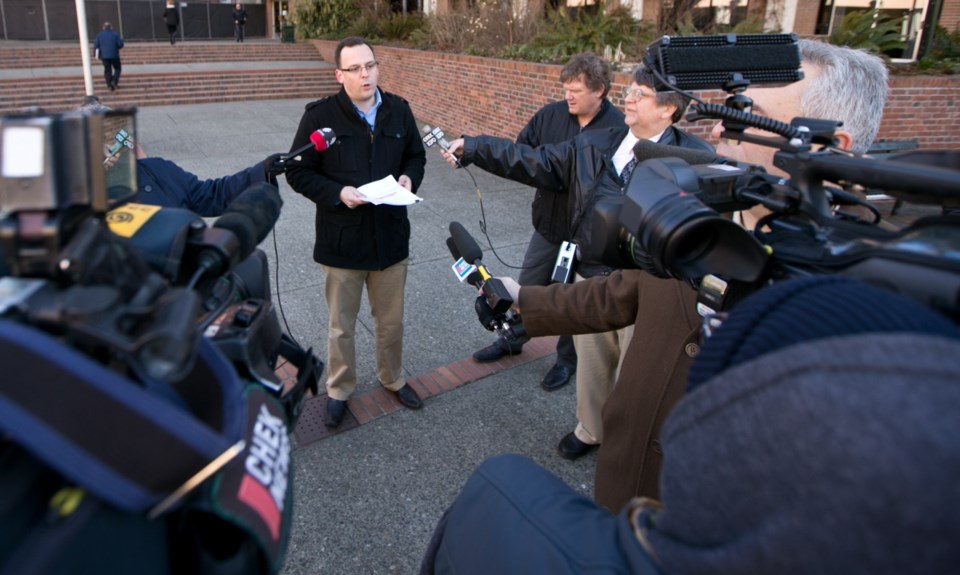The price tag is rising on the capital region’s sewage-treatment project, and the $783-million initiative “has boondoggle written all over it,” says the B.C. director of the Canadian Taxpayers Federation.
Jordan Bateman said a 48-page report prepared by an independent accountant puts the actual cost of the project, after factoring in inflation, at $830 million. That’s because the current price tag is based on 2010 dollars, he said.
“All told, it looks like the average CRD homeowner will pay about $410 per year for the project,” Bateman said.
He said the report takes issue with the way the Capital Region District has calculated the tax burden for homeowners.
“In Victoria, we calculate that, over six years, the average Victoria homeowner’s tax bill will be $579 more than what the CRD has projected. Likewise for Esquimalt, $555 more than what has been calculated by the CRD.”
Bateman said the report found little information on how businesses would be affected.
“We couldn’t find an estimate for businesses, for example, what a business ratepayer would pay.”
The report calculates business landowners would pay about $2,300 per year in taxes for the project’s capital and operating expenses, or about $200 a month.
Capital Regional District sewage committee chairman Geoff Young said the contents of the report and the tough words in the press release that accompanied it do not match up.
“The press release talked about how [the project] was a boondoggle and it was horrendously expensive.
“It is expensive. It’s not a boondoggle and it doesn’t say in the report that it is a boondoggle,” Young said.
And while it is a costly project, “every other municipality in the civilized world has sewage treatment,” Young said.
He said it is legitimate for the report to bring up the issue of inflation.
“There’s no question that delays cost money and we’ve been hearing that. At the moment, Seaterra [the name for the treatment project established in October] seems confident that, aside from the biosolids issue, they could still live within the budget that they were given.”
A biosolids or sludge facility will be built along with the main treatment plant.
One thing the report doesn’t do in much detail is look at the process of charging for the sewage system based on the amount of flow generated, which will likely be a something that is looked at in most of the seven municipalities involved, Young said.
“That’s one of the reasons why Victoria seems to be paying a lot. Unfortunately we have an old, leaky pipe system and a lot of water gets into it.”
Bateman said the release of the report is well-timed, since Esquimalt will be holding a Feb. 18 public hearing on the rezoning needed for the treatment plant. The chosen site for the plant is Esquimalt’s McLoughlin Point.
“For a lot of people, this is the watershed moment for the sewage-treatment plant,” Bateman said.
Bateman said every mayor and councillor in the affected municipalities will be sent a copy of the report, adding that he expects sewage treatment to be a significant issue in this fall’s municipal election.



